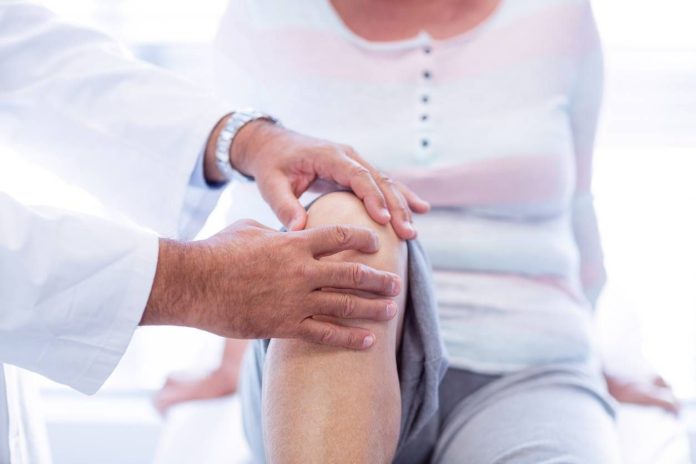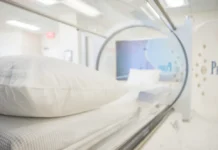
The platelet-rich plasma made from an individual’s samples of complete blood can be very effective in accelerating the natural healing process as it has high levels of growth factors. What is the take of the FDA on these therapies? We first need to know more about PRP, how it is collected and used, and any possible side effects. In addition, there is a necessity to differentiate between ‘FDA approval’ and ‘FDA clearance for use.
What is platelet-rich plasma?
Platelet-rich plasma is made up of two elements: plasma, which is the liquid part of blood, and platelets, a type of blood cell which plays a crucial role in the healing process within the body. Platelets are popular for their ability to clot blood. Still, many are unaware that they also contain growth factors that stimulate cell reproduction and tissue regeneration in the treatment area. Therefore, platelet-rich plasma is simply normal blood with higher platelet levels than usual.
How is platelet-rich plasma made available?
To collect the platelet-rich plasma, technicians must first extract whole blood from patients. The whole blood is then placed in a centrifuge where the platelet-rich portions are forced out. Usually, the blood separates into three portions in the centrifuge; red blood cells, a mixture of white blood cells and platelets, and the top layer containing platelets.
In addition, there are two methods of preparing PRP, namely the ‘PRP method’ and the ‘buffy coat’ method. The two processes resemble each other, mixing the complete blood with an anticoagulant before running it in the centrifuge. It is worth noting that the FDA has approved the PRP method and buffy coat as ways of preparing PRP from as early as 2009.
Why do people opt for PRP therapy?

PRP therapies have numerous applications for individuals suffering from various conditions such as neuropathy and injuries that may occur to the musculoskeletal system. In addition, medical professionals use PRP therapy in plastic surgery and cosmetic surgery. The following are the most widespread applications of PRP therapy.
- They are treating injuries to the musculoskeletal system. This is one of the most widespread applications of PRP therapy, especially in sports medicine. PRP has helped many patients avoid surgery when they opt for it as an alternative treatment. The therapy also has the bonus of faster healing time for individuals who wish to return to their normal routine as soon as possible. Some of the ailments that PRP is said to treat include arthritis, carpal tunnel, epicondylitis, lumbar pain, and sprains, among others. In addition, early studies have shown that PRP therapy has promise in the treatment of Osteoarthritis as it can help alleviate pain and stiffness associated with the condition by controlling the joint environment and reducing inflammation.
- They are treating injuries to the nerves. This is a recently popularized application of PRP therapies, particularly when it comes to treating peripheral neuropathy. PRP therapies have been used since 2012 to alleviate nerve pain that comes with PN after further research was conducted to validate its efficacy.
- Cosmetic treatments. PRP became a popular option for people who want to appear younger. The therapy can be used to reduce the appearance of wrinkles on the face, neck, and hands. In addition, PRP has been revealed to expedite the healing process in patients who have undergone hair transplants. Evidence indicates that the therapy can help the patient grow hair faster after healing. In addition, PRP therapy is effective in treating male pattern baldness, which helps prevent hair loss and promote new hair growth.
- Plastic surgery. Platelet-rich plasma effectively speeds up the recuperation time after plastic surgery procedures such as a skin graft. This has made PRP therapy popular in its application in plastic surgeries. In addition, this application is backed up by evidence drawn from clinical trials and studies conducted on patients, with the conclusion being that PRP is beneficial for expedited wound healing.
PRP therapy risks and side effects

When you get a PRP injection, it is generally a low-risk procedure and should not result in any significant side effects. The process involves drawing blood, meaning ensuring you are hydrated to avoid being lightheaded would be beneficial. After the therapy, you may experience some bruising and soreness at the injection site, but this is normal.
The PRP injections are made up of your plasma, so the risk of you developing an allergic reaction is very low. Other less common risks of getting PRP injections include:
- Tissue damage
- Bleeding
- Nerve injuries
- Infection
PRP Therapy and the FDA
Under FDA conditions, PRP therapy is regarded as ‘biologic ‘.Since devices are used to prepare the PRP injections, the FDA becomes involved in the approval and clearance of PRP treatments and any device used to prepare the injection.
Currently, most of the devices used to prepare PRP therapies are cleared for use by the FDA. The actual PRP treatment is considered because it uses an individual’s blood. They are not considered a drug. This means that PRP therapy is not contingent on the approval of the FDA before medical practitioners can use it.
However, it is imperative to remember that the governing body does not approve many procedures or treatments used in clinical settings. Still, their use is allowed since they are classified as being ‘cleared’ for application. This is the case with PRP therapies and devices such as the centrifuge to prepare the PRP samples.

In addition, there is also no approval from the FDA for PRP therapies in sports-related treatments. Despite this, the therapy is widely used in sports medicine and is effective in quickly treating sports injuries. Its widespread use in the sports industry is that it offers faster healing times, which is especially beneficial if you are an athlete.
As we speak, the FDA approval concerning the application of PRP therapy in the management of tendonitis by giving injections is still pending. However, the FDA has given the green light on PRP treatment procedures for certain complications such as diabetic ulcers that become resistant to healing and, in select cases, orthopedic surgery.
As we have seen, the FDA is not opposed to PRP treatments which is why the treatment therapy and the applied devices are ‘cleared’ by the FDA but not approved. The reason for this disparity is the influence of Big Pharma, as the companies do not want to compete with the treatment. This is why the FDA has a great deal of bureaucracy regarding approving the therapy and its devices.
When looking at real world stats as many as 85% of recipients of the treatment report positive effects This is echoed by real world orthopedic practices like Integrated Orthopedics, who is one of the largest providers of PRP treatment in Arizona.
Another reason is that PRP is a substance that occurs naturally, which can bring about confusion among members of the governing body, the public, and medical practitioners. Remember that the ‘D’ in FDA stands for ‘drug,’ and one of the roles of the agency is to regulate drugs across the country. Since platelet-rich blood cannot be classified as a drug, medical practitioners can legally and ethically administer the therapy to benefit their patients.








